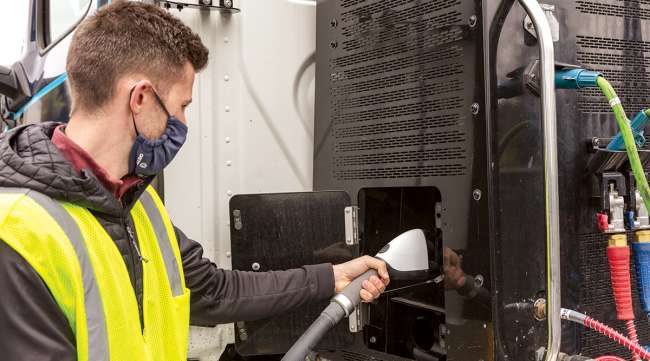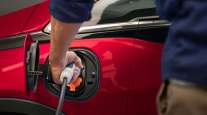Senior Reporter
Cost, Chargers, Range Are Challenges for Electrification

[Stay on top of transportation news: Get TTNews in your inbox.]
Trucking and industry stakeholders have warned the Environmental Protection Agency that high vehicle costs and limited charging infrastructure are obstacles to aggressive plans that government agencies have set for rollout of electric vehicle technology, even as fleets move to adopt commercial EVs at a measured pace.
“Our members are at various stages of adoption on research of zero-emission trucks, but what they have learned thus far is that they are upwards of two to three times more expensive than a conventional diesel truck, new charging and refueling infrastructure is needed to support adoption of the technology at the onset, infrastructure build-out on their [own] sites provides the greatest flexibility for their operations, and current battery-electric truck ranges impact their operational decisions,” American Trucking Associations, the California Trucking Association, and the Harbor Trucking Association said in joint written comments.
The groups also stressed that EPA’s technical assessments of the technology “should focus on the near-term commercial viability of heavy-duty electric vehicles and equipment in a way that minimizes risk to the supply chain and builds a more resilient freight network.”
In a request for comment, EPA sought input detailing the availability, market price, and performance of zero-emission trucks, zero-emission port equipment, electric charging and other fueling infrastructure needs for zero-emission technologies. The agency said it hopes to gain information that will help buttress the use of federal infrastructure funding for port electrification.
The Association for the Work Truck Industry in written comments stressed the importance of government backing for the build-out of a charging network.
“It is critical that the government prioritize building the electric refueling infrastructure based on the regulatory framework mandating EVs,” the group said. “Based on the accelerated time frames of EPA and [the California Air Resources Board] for the manufacture and sale of zero-emission vehicles, it is unclear how there will be enough electric power generation in all of the necessary locations and within the existing abbreviated time frames in order to fuel the varying types of vehicles that will be required to be ZEV.”
The Port of Los Angeles pointed out that many ports are not able to install truck charging infrastructure at terminals. “Strong support from federal sources in the form of new charging/fueling infrastructure will be vital in enabling the equitable transition to a zero-emission drayage truck fleet at the ports,” it wrote.
Original equipment manufacturer Navistar echoed the importance of federal assistance of infrastructure build-out. “Commercial charging infrastructure is a crucial part of the transition to commercial EVs and we recommend that EPA consider infrastructure assistance and deployment as part of the Clean Heavy-Duty Vehicles program,” said the company, the parent of International Trucks.

Hayden Cardiff, co-founder and chief innovation officer of Idelic, discusses predictive analytics software and scoring driver practices. Tune in above or by going to RoadSigns.ttnews.com.
Navistar also outlined concerns its customers must consider. “For all Class 6/7 trucks, there is a customer trade-off between weight, range and payload,” it said. “Batteries are heavy. If a customer normally has 8,000 pounds of payload capacity on a Class 6 truck with an internal combustion engine, they are likely down to 5,000 pounds on an electric vehicle to get a reasonable range due to battery weight.”
One private company outlined the challenges it faces. “We have been working since November of 2021 with our local utility on charging infrastructure,” said MLI Leasing LLC, which said it has a fleet of 50 diesel and compressed natural gas Class 8 trucks. “We have been working with an OEM since May of 2022 to deploy 15 battery-electric vehicle trucks in our terminal. The OEM won’t provide the trucks unless infrastructure is secured and already in process.”
Charging station manufacturer ChargePoint Inc. — which has built a network of EV charging stations in North America and Europe — agreed that uncertainty regarding vehicle delivery timelines has delayed infrastructure installation for some fleets, in addition to concerns about realizing a return on investment in the trucks.
“Commonly stated concerns from fleets are that the current cost effectiveness of zero-emission vehicles and infrastructure may not meet their operational needs absent federal funding,” it said.
Want more news? Listen to today's daily briefing below or go here for more info:




